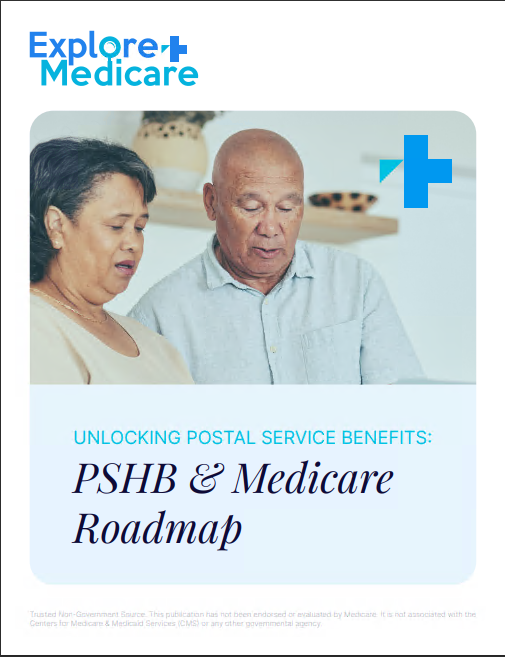Key Takeaways
-
Medicare Part C, also called Medicare Advantage, includes extra benefits like dental, vision, and hearing—but you give up Original Medicare’s flexibility to get them.
-
These plans are offered by private companies and come with their own rules, networks, and cost-sharing structures, which may not always work in your favor.
Understanding Medicare Part C in 2025
Medicare Part C—also known as Medicare Advantage—continues to attract millions of Americans in 2025. If you’re considering enrolling or are already in a plan, it’s important to understand what you’re gaining—and just as importantly, what you’re potentially giving up.
You likely hear a lot about the added benefits Part C offers. Vision, dental, hearing, gym memberships, and transportation are just a few of the extras these plans often include. But beneath those appealing perks are trade-offs that can affect your access to care, your out-of-pocket costs, and your provider choices.
Let’s break it all down.
What Medicare Part C Actually Is
Medicare Part C is an alternative to Original Medicare. It bundles together:
-
Part A (hospital insurance)
-
Part B (medical insurance)
-
Often Part D (prescription drug coverage)
These all come through a private insurance company that contracts with Medicare. You’re still in the Medicare program, but you get your benefits through the plan—not directly from the federal government.
The Allure of Extra Benefits
The extras offered by many Part C plans are one of the main reasons people enroll. In 2025, most plans still advertise additional coverage such as:
-
Dental cleanings and exams
-
Vision tests and eyewear allowances
-
Hearing aids and screenings
-
Telehealth access
-
Some transportation to medical appointments
-
Over-the-counter product allowances
These are services Original Medicare doesn’t usually cover, so it’s understandable why these plans seem attractive. However, extra benefits are not standardized. The availability, scope, and usability of these benefits vary by plan and region.
Limited Networks and Referrals
Here’s where trade-offs start to emerge. Medicare Advantage plans generally use network-based care. That means:
-
You may need to pick a primary care doctor.
-
Referrals are often required to see specialists.
-
Your costs may be significantly higher if you go out-of-network—or those services might not be covered at all.
In contrast, Original Medicare allows you to see any provider nationwide that accepts Medicare. With Part C, your choices are narrowed. Some plans offer larger or more flexible networks than others, but this often depends on your location and the specific plan design.
Prior Authorization: A Growing Frustration
As of 2025, most Medicare Advantage plans still use prior authorization—requiring approval before you can get certain services like MRIs, hospital stays, or outpatient surgeries. This can delay care and create administrative burdens for both patients and providers.
While prior authorization is meant to control costs, it can be a barrier when you need timely medical treatment. Studies in past years revealed that prior authorization led to care delays, and these concerns remain relevant in the current year.
Cost Structures Aren’t Always Predictable
Although Part C plans have an annual maximum out-of-pocket (MOOP) limit, they often include:
-
Monthly premiums (in addition to the Part B premium)
-
Copayments or coinsurance for most services
-
Separate deductibles for medical and drug coverage
In 2025, the maximum allowable in-network MOOP for Medicare Advantage is $9,350, but many plans have lower caps. However, those caps only apply to Medicare-covered services—not to additional benefits like dental or vision, which may have separate limits or restrictions.
Costs can vary significantly from one plan to another. If you’re in poor health or expect to use many services, your total out-of-pocket costs under Part C might exceed what you would have paid under Original Medicare with a Medigap plan.
Prescription Drug Coverage May Be Limited
Most Medicare Advantage plans include Part D drug coverage. But just like with standalone Part D plans, formularies (the list of covered drugs) and pharmacy networks vary.
That means:
-
Your medications might require prior authorization or step therapy.
-
Some drugs may be placed in higher cost tiers.
-
Pharmacies in your area may not be in-network, limiting your options.
While prescription drug coverage is bundled for convenience, it doesn’t always translate to better or cheaper access.
Enrollment and Disenrollment Windows
One of the most important things to understand in 2025 is when you can join or leave a Part C plan.
-
Initial Enrollment Period (IEP): Starts three months before and ends three months after your 65th birthday month.
-
Annual Enrollment Period (AEP): Runs from October 15 to December 7 each year. You can switch between Part C and Original Medicare during this time.
-
Medicare Advantage Open Enrollment (MA OEP): Occurs January 1 through March 31. You can leave your Part C plan and return to Original Medicare or switch to another Part C plan.
Outside of these windows, you can only make changes if you qualify for a Special Enrollment Period (SEP) triggered by events such as moving, losing other coverage, or plan termination.
Not All Providers Accept Medicare Advantage
A growing concern is that some hospitals, health systems, and providers are opting out of Medicare Advantage altogether in 2025. They cite delayed reimbursements, claim denials, and administrative headaches as reasons for declining to participate.
If your doctor or local hospital doesn’t accept your Medicare Advantage plan, you could be forced to:
-
Change providers
-
Pay full cost for out-of-network services
-
Wait for care at an in-network facility farther from home
This isn’t an issue under Original Medicare, which nearly all doctors and hospitals still accept.
Supplemental Benefits Aren’t Guaranteed
One of the biggest misconceptions is that extra benefits like dental or hearing are guaranteed and extensive. But in 2025, these benefits are still considered supplemental, and:
-
They’re not regulated like core Medicare benefits
-
Coverage amounts vary widely between plans
-
There may be caps, waiting periods, or limited provider networks
In other words, the flashy extras that drew you in might not be as useful or accessible as you expected.
Appeals and Denials Are More Common
If a service or prescription is denied under a Part C plan, you have appeal rights—but the process can be complex and time-consuming. Original Medicare doesn’t require prior approval for most services, so it’s less likely you’ll encounter a denial in the first place.
In recent years, advocacy groups and oversight agencies have raised concerns about inappropriate denials and the burden placed on patients to fight them. This remains an ongoing issue in 2025.
You Must Still Pay Your Part B Premium
Even if you enroll in a Medicare Advantage plan, you’re still responsible for paying your monthly Part B premium—which in 2025 is $185. Some plans may offer reimbursement incentives, but this isn’t universal.
So while it might look like a good deal at first glance, don’t assume that you’re paying less overall. Always compare your expected medical usage with the plan’s copays, coinsurance, and drug costs.
Part C Is Not for Everyone
Ultimately, whether Medicare Advantage is a good fit depends on:
-
Your location and the plans available to you
-
Your preferred doctors and hospitals
-
Your health status and expected medical needs
-
Your budget and risk tolerance
Some people are happy with the convenience and savings Part C offers—especially if they stay healthy and use only in-network care. But others find the restrictions, prior authorizations, and unpredictable costs frustrating.
Understanding the Trade-Offs Can Lead to Smarter Choices
In 2025, the popularity of Medicare Part C remains strong, but it’s important not to be swayed by surface-level benefits alone. Before enrolling—or staying enrolled—take a close look at the plan’s rules, coverage, provider access, and cost structure.
The more you understand the trade-offs, the better positioned you are to make a choice that aligns with your healthcare priorities and financial goals.
To get help comparing your options, talk to a licensed agent listed on this website. They can help you evaluate what’s best for your individual situation.









